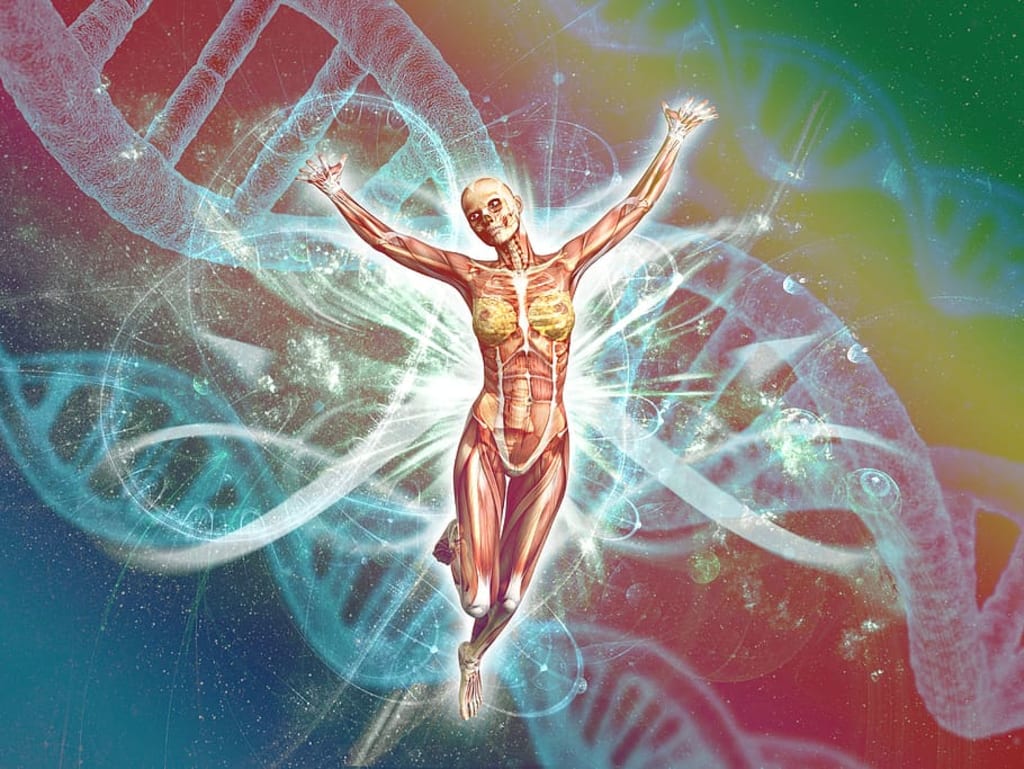5 Misconceptions of Biology: Unveiling the Wonders of Life
Did you know this?

Introduction:
Biology, the study of life, is a captivating subject that unravels the mysteries of living organisms. However, it is also plagued by misconceptions that can hinder our understanding of the natural world. In this article, we will debunk five common misconceptions of biology, shedding light on the truth and unveiling the wonders of life. By dispelling these myths, we hope to inspire a deeper appreciation for the complexity and beauty of the biological world.
1 ) Myth: Humans Only Use 10% of Their Brains
One of the most persistent myths is the notion that humans only use a mere 10% of their brains. In reality, brain imaging techniques have shown that the entire brain is active and involved in various functions. Every region of the brain serves a purpose, from sensory perception to memory consolidation and decision-making. Our brains are marvels of complexity, with billions of neurons working in harmony to orchestrate our thoughts, emotions, and actions.
Real-Life Example: Consider a pianist playing a piece from memory. The brain coordinates the motor skills needed to press the correct keys, recall the notes and rhythms, and express the emotion of the music—all of which involve different regions working together seamlessly.
2)Myth: Evolution is Just a Theory
Evolution is often misunderstood as a mere theory, implying uncertainty or speculation. However, in scientific terms, a theory is a well-substantiated explanation supported by a vast body of evidence. Evolution, supported by abundant fossil records, genetic studies, and observable phenomena, is one of the most extensively researched and accepted theories in biology. It explains how species adapt and change over time through natural selection and genetic variations.
Real-Life Example: The Galapagos finches, studied by Charles Darwin, provide a compelling real-life example of evolution. These finches, with different beak shapes and sizes, adapted to the specific food sources available on each island of the Galapagos archipelago, demonstrating natural selection in action.
3)Myth: All Bacteria Are Harmful
The word "bacteria" often evokes negative connotations, associated solely with disease and infection. While some bacteria can indeed cause illness, it is essential to recognize that not all bacteria are harmful. In fact, many bacteria are beneficial and play critical roles in ecological balance, nutrient cycling, and even human health. Our bodies host trillions of bacteria, collectively known as the human microbiome, which aid digestion, support the immune system, and contribute to overall well-being.
Real-Life Example: Yogurt and other fermented foods contain beneficial bacteria, such as Lactobacillus and Bifidobacterium. These probiotics promote a healthy gut microbiome, aiding digestion and boosting immune function.
4)Myth: The Five Senses are Fixed and Distinct
We are often taught that we have five distinct senses: sight, hearing, taste, smell, and touch. However, our perception of the world is far more intricate. The brain integrates information from multiple sensory systems, allowing us to perceive the environment holistically. Additionally, there are other senses beyond the traditional five, such as proprioception (body position awareness) and the vestibular sense (balance and spatial orientation
Real-Life Example: When enjoying a meal, our perception of flavor is a result of the integration of taste, smell, and even touch sensations. The aroma enhances the taste, while texture and temperature contribute to the overall sensory experience.
5)).
Real-Life Example: When enjoying a meal, our perception of flavor is a result of the integration of taste, smell, and even touch sensations. The aroma enhances the taste, while texture and temperature contribute to the overall sensory experience.
5)Myth: DNA Determines All of Our Traits
While DNA provides the blueprint for life and contains genetic information, it does not solely determine all of our traits. Environmental factors, such as nutrition, exercise, and exposure to toxins, can also influence gene expression and the development of certain traits. The field of epigenetics explores how these environmental factors can modify gene activity without altering the underlying DNA sequence.
Real-Life Example: Identical twins, who share the same DNA, may exhibit differences in traits due to various environmental factors. For instance, one twin engaging in regular exercise and a healthy lifestyle may exhibit different health outcomes compared to their sedentary counterpart.
Conclusion:
By debunking these five common misconceptions of biology, we uncover the true complexity and wonder of the living world. Understanding that the brain is a dynamic organ, evolution is a well-supported theory, bacteria can be beneficial, our senses are interconnected, and DNA is influenced by environmental factors allows us to appreciate the intricate mechanisms that drive life's diversity. Let us embrace curiosity, seek scientific knowledge, and marvel at the amazing intricacies of biology that surround us every day.





Comments
There are no comments for this story
Be the first to respond and start the conversation.